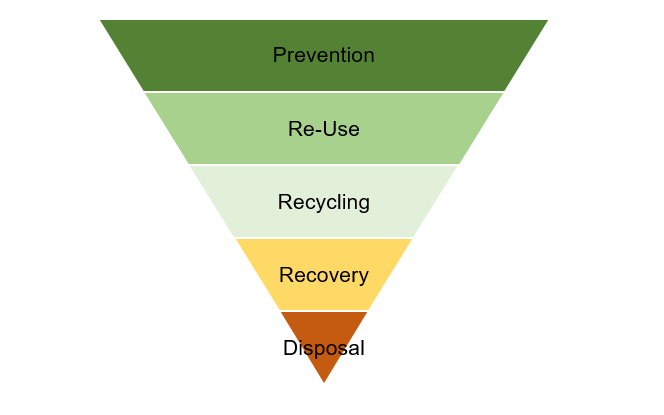The Waste Hierarchy – Hazardous waste in a circular economy

It is important to recognize that the preferred solutions for dealing with potentially hazardous materials and components found in e-waste follow the same hierarchy of priorities as for other wastes.
That is to say: wherever possible, suitable options for prevention – e.g. through using rechargeable not disposable batteries – and re-use – e.g. through repairing unwanted products – whilst keeping the components in good working order are the safest and most environmentally sound means of managing hazardous e-waste components, and these should remain the priority.
The primacy of applying the waste hierarchy for hazardous components in e-waste reinforces the need for effective education and awareness targeted at users and producers of e-waste to avoid the generation of hazardous e-waste in the first place.
By keeping EEE in good working order any materials which may be inherently hazardous are also likely to remain in a safe condition with little or no exposure to the hazards. It is only when products are broken, or reach the end of their life, that significant increases in exposure start to occur whilst implementing options which are lower down the waste hierarchy.
